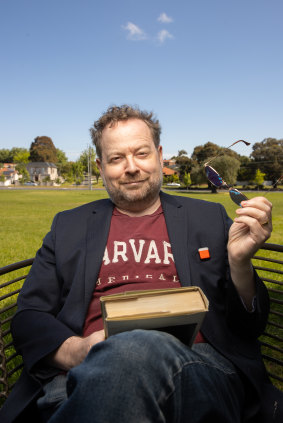[ad_1]
The research is the largest-ever modelling study of the circadian rhythm. To confirm the data reflected regular light exposure, they tested a subset of participants multiple times, then followed up on the participants’ health outcomes an average of eight years later.
The study found that – regardless of baseline cardiometabolic risk factors (high BMI, hypertension, and high cholesterol ratio), sleep duration, chronotype, or mental health – people with poor light behaviour were 30 to 40 per cent more likely to develop diabetes.
The worst light exposure (more light between midnight and 6am) didn’t have to be “crazy bright” to have a negative effect, Cain says. “It was any light above 48 lux, which is what a bright lamp would be.”
A typical phone screen is about 40 lux, adds Phillips, explaining that exposure to anything over 1 lux late at night increased the risk. The brighter the light, the higher the risk.
They did not have data on whether people were also eating at these times, which may affect their risk, but the dose-dependent relationship suggests a causal role of light.

Sean CainCredit: Simon Schluter
“Light is the primary thing that affects the clock, so it can strengthen your clock or weaken it,” Cain says. “Lots of light during the day tends to strengthen your clock [and] its ability to control the rest of the body… But light at night weakens the ability of the clock to control the rest of the body.”
This means the circadian clocks, which live in every cell of our body, run to their own time, and the symphony of rhythms, which harmonise to support good health, becomes a cacophony.
“We’re indoors 90 per cent of our day and light indoors is just not bright enough,” says Cain, who has developed a wearable light sensor being used by researchers that will eventually be available to the public to help improve light exposure patterns.
“Then light at night is quite bright, and it doesn’t take much light at night to have a negative impact on you.”
Loading
If someone has to use night lights, the quality of the light matters. For the least biological disruption, dim the lights as much as possible for around three hours before bed, and if you need to turn one on, opt for orange or red light.
Conversely, if someone has to wake up early each day, Cain advises turning on all the lights if the sun is not yet up.
While there are significant individual differences in how sensitive people are to the effects of light, we can all benefit greatly from better light behaviours.
“It’s not rocket science,” Cain says. “Get bright light in the day and keep it as dim as you can handle at night. If you change it, you can feel differences almost immediately.”
Phillips agrees: “Diabetes is really hard to treat… compared to many of the other intervention strategies we’re doing, this is relatively simple and really cheap.”
Make the most of your health, relationships, fitness and nutrition with our Live Well newsletter. Get it in your inbox every Monday.
[ad_2]
Source link